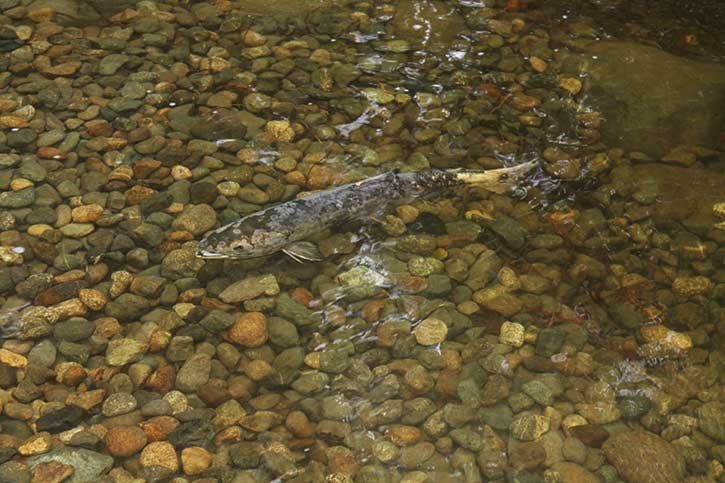An abnormally-dry summer in Sooke and in B.C. is threatening important salmon waterways, says the president of the Sooke Salmon Enhancement Society.
The reason? Coho salmon spend a full year in fresh water streams before migrating out to sea, said Robert Gamache.
Coho migrate in and out of DeMamiel Creek, while chinook and chum leave the Sooke River system around April and May.
With creeks drying up and rivers reduced to mere trickles of water, Gamache said coho risk getting trapped in unsustainable pools where they die.
Despite the odds, society members do all they can to make sure that doesn’t happen.
“During summertime, parts of DeMamiel Creek actually go underground, so we set traps here and there, gather those [fish] that are stranded in small pools and in danger of drying up and we transport them into the larger pools that we know will stay all summer,” Gamache said.
Still, it doesn’t look great.
This year, salmon, which thrive in cool water, are likely to face “less than ideal environmental conditions,” says the Department of Fisheries and Oceans Canada on its website.
DFO notes that unusually warm ocean temperatures along coastal B.C. – up to three degrees higher than normal in some locations – were first noticed last fall.
These warm water temperatures are attributed to unusual weather patterns in the northeast Pacific Ocean throughout 2014, which caused very warm and fresher water to remain at the surface and reduced the mixing with cooler, deeper water.
To counter the low levels, the salmon enhancement society maintains a dam up in the mountains which it uses to try and regulate some water downstream to keep the salmon system alive.
“The fact that we’re not getting any rain certainly impacts our capacity to keep that going through to the end of September,” Gamache said.
Three years ago, Gamache said the society lost one of its dams when DFO decided to take it out, leaving the society with only half the water it used to have available. This, in turn, left everyone with a pretty tough reality.
“If the salmon can’t stay alive, they can’t return,” Gamache said. “The coho return dropped dramatically since we lost that dam.”
In contrast, the water level doesn’t really affect the chinook runs.
“What it’s doing to the chinook runs is possibly pushing them a little bit later, where we’d see those fish returning from the third week of September to the first week of October,” Gamache said, adding that if there’s no water in the Sooke River, the fish will stay in the harbour.
An exact flow of the Sooke River and surrounding creeks is unknown because DFO doesn’t conduct any assessments in the Greater Victoria area.
The extremely low snow pack levels in southern B.C. have increased the probability of low river levels and high river temperatures this summer.
Salmon generally hold at the river mouth while waiting for cooler conditions before they migrate upstream to spawn. But sometimes salmon do not wait long enough and swim upstream into lethal water temperatures.
At this point Gamache says there’s only way to counter the drought: “dance around for rain.”
news@sookenewsmirror.com
